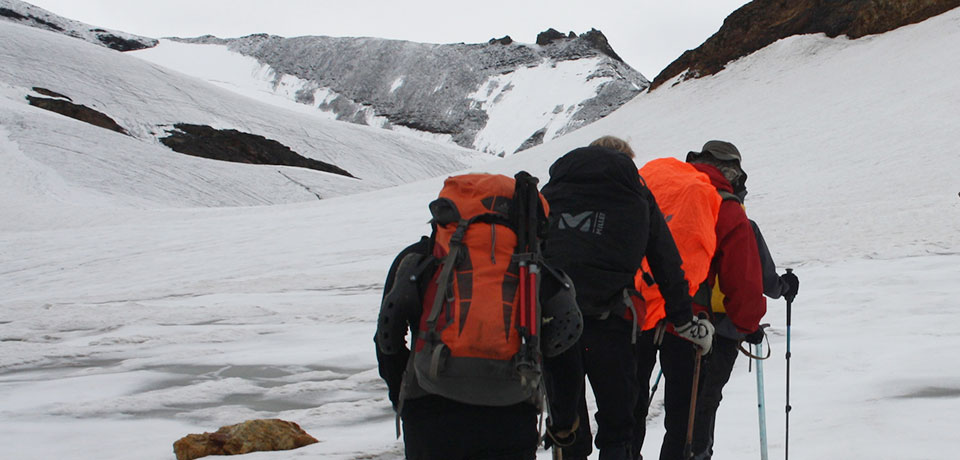
Trekking in the Himalayas is an experience of a lifetime, offering breathtaking landscapes, challenging trails, and a chance to connect with nature in its purest form. However, for beginners, the grandeur of these towering peaks can be both thrilling and intimidating. To ensure that your Himalayan adventure is both safe and enjoyable, it’s essential to be well-prepared. Here’s a comprehensive guide to help beginners navigate the basics of Himalayan trekking.
1. Understanding the Terrain
The Himalayas boast a diverse range of trekking routes, from easy trails to strenuous climbs. Understanding the terrain is crucial for selecting a trek that matches your fitness level and experience.
- Easy Treks: Ideal for beginners, these treks involve less altitude gain and moderate terrain. Examples include the Beas Kund Trek and the Kheerganga Trek.
- Moderate Treks: Suitable for those with some trekking experience, these routes involve steeper ascents and higher altitudes. The Hampta Pass Trek and the Chopta-Tungnath Trek fall into this category.
- Strenuous Treks: Reserved for experienced trekkers, these involve high altitudes, challenging terrain, and longer durations. Treks like the Everest Base Camp Trek and Annapurna Circuit Trek are examples.
2. Preparing Physically
Physical fitness is a key component of successful trekking. Start preparing well in advance to build endurance and strength.
- Cardio Training: Engage in activities like running, cycling, or swimming to improve cardiovascular fitness.
- Strength Training: Focus on building leg strength through exercises such as squats, lunges, and step-ups.
- Hiking Practice: If possible, practice hiking on uneven terrain with a weighted backpack to simulate trekking conditions.
3. Essential Gear and Equipment
Proper gear is vital for a comfortable and safe trek. Here’s a list of essentials:
- Footwear: Invest in high-quality trekking boots with good ankle support and a sturdy sole.
- Clothing: Layer your clothing to adapt to changing weather conditions. Essentials include moisture-wicking base layers, insulating mid-layers, and a waterproof outer layer.
- Backpack: A comfortable and well-fitted backpack is crucial for carrying your gear. Consider a size between 40 to 60 liters.
- Sleeping Gear: A good quality sleeping bag suitable for the expected temperatures and a sleeping mat for added comfort are necessary.
- Trekking Poles: These can help with balance and reduce the strain on your knees, especially on downhill stretches.
4. Understanding Altitude Sickness
Altitude sickness is a common concern in high-altitude treks. Understanding its symptoms and prevention methods is important.
- Symptoms: Headaches, dizziness, nausea, and shortness of breath.
- Prevention: Gradually acclimate by spending extra time at intermediate altitudes and staying hydrated. Avoid overexertion and listen to your body.
- Treatment: If symptoms persist, descending to a lower altitude is the most effective treatment.
5. Safety Measures
Safety should always be a priority. Here are some guidelines to ensure a safe trekking experience:
- Travel with a Guide: Especially for beginners, having an experienced guide can enhance safety and provide valuable local knowledge.
- Group Travel: Trekking in a group can offer added safety and companionship.
- Emergency Protocols: Familiarize yourself with the emergency procedures and the nearest medical facilities.
6. Environmental Responsibility
Preserving the natural beauty of the Himalayas is crucial. Follow these eco-friendly practices:
- Leave No Trace: Pack out all trash and avoid leaving any waste behind.
- Respect Wildlife: Observe animals from a distance and avoid feeding them.
- Stick to Trails: To prevent soil erosion and protect plant life, stay on designated paths.
7. Cultural Sensitivity
Respecting local cultures enhances your trekking experience and fosters positive interactions with the communities you encounter.
- Dress Modestly: In many Himalayan regions, modest clothing is appreciated. Respect local customs and dress appropriately.
- Seek Permission: When taking photographs, always ask for permission from locals, especially in remote villages.
8. Packing Tips
Effective packing can make or break your trekking experience. Here’s how to pack smart:
- Checklist: Create a checklist to ensure you don’t forget essential items.
- Pack Light: Only carry what’s necessary to avoid excess weight. Opt for lightweight, multi-purpose gear.
- Organize: Use packing cubes or dry bags to keep items organized and easily accessible.
FAQs for Beginners
Q: How long does it take to acclimate to high altitudes?
A: It typically takes 2-3 days at intermediate altitudes for your body to adjust. However, this can vary based on individual fitness and altitude levels.
Q: What should I do if I experience altitude sickness?
A: Descend to a lower altitude immediately. Rest, hydrate, and seek medical attention if symptoms persist.
Q: Can I trek without prior experience?
A: Yes, beginners can successfully trek in the Himalayas by choosing easier trails and adequately preparing. It’s also beneficial to trek with a guide.
Q: What’s the best time to trek in the Himalayas?
A: The best trekking seasons are typically spring (April-May) and autumn (September-November), when the weather is more stable and trails are more accessible.
Q: How much should I budget for a trek?
A: Budgeting depends on the trek’s duration, location, and the level of comfort you seek. On average, costs can range from $500 to $2,000, including permits, guides, and equipment.
Final Thoughts
Trekking in the Himalayas is a remarkable adventure that promises unforgettable experiences and personal growth. By following these trekking guidelines for beginners, you can ensure a safe, enjoyable, and rewarding journey. Remember, preparation is key to making the most of your trek and creating memories that will last a lifetime. Embrace the challenge, respect the environment, and savor every moment of your Himalayan adventure.




